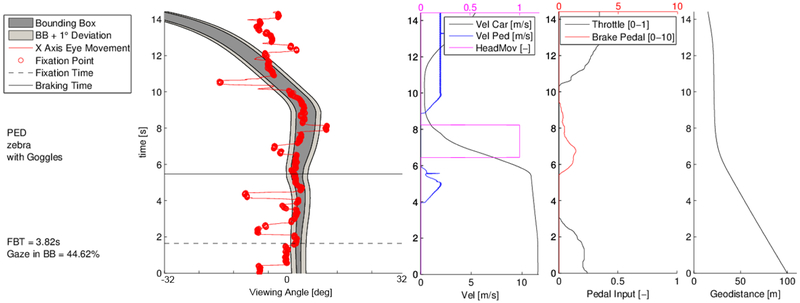Figure 4:
Gaze behavior for one subject for a human-controlled pedestrian event where the pedestrian appeared on the right at a zebra crossing in the normal vision (without goggles) condition; Left: gaze (red filled circles = fixations) in regard to the bounding box around the pedestrian (grey zone); Right: corresponding vehicle and pedestrian dynamics in the crossing situation to link driving with gaze behavior - velocity of car and pedestrian, accelerator/brake pedal use and geodistance between them. The first fixation on the pedestrian occurred soon after the start of the event (at 1.7 s) after which the subject fixated the pedestrian (red circles within the pedestrian bounding box) almost continuously (with just a few glances away) until the pedestrian had crossed to the far side of the road (at about 12s). The pedestrian made his first step toward the road at 4.0 s and turned its head towards the driver at 6.5 s. The brake pedal was first applied at 5.5 s, suggesting that the driver interpreted the step toward the road as signaling the intention to cross. The time from the first fixation to the brake pedal use (FBT) was 3.8 s. Around 10 s the driver started to accelerate again once the pedestrian had safely crossed the driver’s lane.

